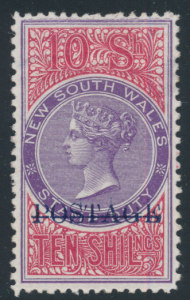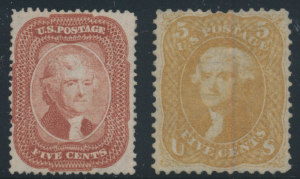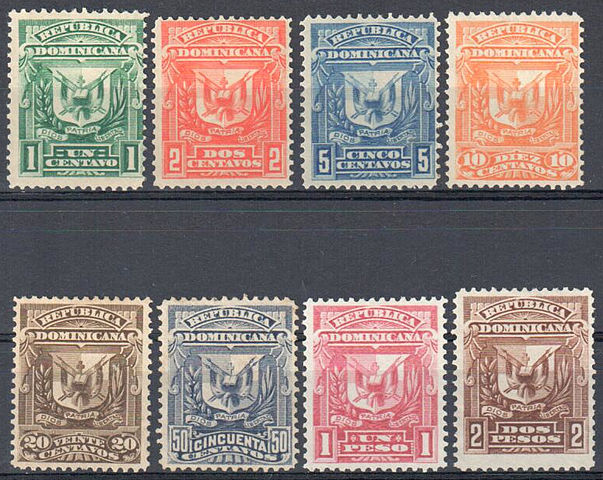Monthly Archives: August 2020
- Read more »There is a rule in determining philatelic popularity and it states that countries are collected in proportion to the popularity of stamp collecting in the home country. This accounts for the widespread philatelic popularity of say the United States or Great Britain or Germany. And it accounts for the relative philatelic unimportance of say Haiti or Paraguay. But there are countries that don't fit this rule and which are very popular despite very small home markets. The reasons for this fall into a couple of categories. Viet Nam has become an important philatelic country despite few internal collectors. This is because the large number of Americans (often ex servicemen) that collect these stamps (similar affinity is the cause if the popularity of Canal Zone and Danish West Indies). St Pierre and Miquelon is very popular despite few internal collectors. It qualifies for popularity under the exotic country doctrine-places that produce pretty stamps and which people collect because they would
- Read more »
Some countries have small populations, stable domestic politics and little international impact but yet are philatelically very popular and important. Two countries that fit this model are Liechtenstein and Iceland. Both are part of a larger philatelic collecting group (in the case of Liechtenstein it is the Swiss-German area and for Iceland it is the Scandinavian area). This means that these areas enjoy popularity far in excess of what would be natural, based on their internal population. The entire country of Iceland has a population of 330,000, a number that would scarcely support any domestic philatelic market. Liechtenstein is even smaller. What creates the popularity of these countries is their incorporation into the larger philately of the geographic group of which they belong. For many years this has been reflected in the albums that Scott produces as part of the Scott specialty series. There is a set of albums for Scandinavia which incorporates Iceland within the other countries
- Posted August 19, 2020in NewsRead more »
One of the most interesting of the "classic" countries to collect is New South Wales. Now part of the Australian federation, New South Wales (NSW) is Australia's most populous state and was an independent country until 1901 when the seven component states of Australia joined to create one country. The stamps of NSW have always enjoyed great popularity among collectors primarily because the stamps are so interesting and can be collected at so many levels of specialty interest. The stamps themselves are not hard to find and can be obtained without robbing a bank. Specialists have long divided NSW issues into many different catalog numbers mainly by plate type and with paper types and design varieties there are scores of different stamps to collect for what to most people would seem to be each identical stamp. In the perforated period, after 1860, the number of plate, shade, watermark and type varieties are enormous. There are about thirty major design varieties and on these different designs
- Posted August 15, 2020in NewsRead more »
The growth of Asian philately has undermined traditional thinking about where new collectors come from. The traditional model has been the evolutionary model- children (usually boys) introduced to the hobby and collecting in their youth become re enamored with stamps in middle to old age. This paradigm has described the traditional collecting arc in the United States and Europe and has caused considerable chagrin among philatelists about the future of our hobby when we see so few young collectors. The Asian model is quite different-few Chinese collected as children. Rather, as young adults and middle aged men they have come into the hobby in droves. The reasons for this might provide us with a way to promote philately to more mature people today.
The major reason for the popularity of Chinese collecting has been the increase of popularity of stamps among the scientific and managerial class of - Posted August 12, 2020in NewsRead more »
The relative popularity of mint and used United States stamps has been constantly changing during the history of our hobby. The first generation of collectors had little relish for mint stamps. Philately was hardly more than a diversion then and few collectors had the seriousness of purpose to seek quality let alone mint. These collectors were usually satisfied with the cheapest specimen they could find. The increasing value of mint US relative to used has been a long term phenomena. The two stamps illustrated above are mint examples of #27 and #67 respectively. The changes in the relative popularity of mint over used can be seen by comparing the catalog value of these stamps at different times during philatelic history. The Brick Red #27 cataloged in the 1900 Scott catalog $75 mint and $11 used for a ratio of 7-1. In the 1929 Scott the ratio of mint to used hadn't changed ($200 vs $32.50) but by 2020 the ratio had swung dramatically to more than 14-1 ratio for unused, no gum ($20,000 vs
- Posted August 08, 2020in NewsRead more »
Cognitive dissonance is a concept in psychology which states among other things, that the disconnect between what we do and what we believe creates discomfort and to deal with that internal discomfort we alter our perceptions of what we do to be more in line with what we want to believe about ourselves (that is, in plain-speak, we lie to ourselves). Surveys consistently show that Americans report attendance at church at twice the rates that it actually occurs and we report drinking only a third of the amount of alcohol that is actually produced and purchased (making us a very wasteful party nation). In philately, this plays out in the Never Hinged and quality fetish that pervades our hobby. Few collectors ever admit to buying medium quality stamps let alone defective ones and yet, wonder of wonders, they exist in all of the collections that we buy and see. Perhaps collectors damage them after buying them as perfect, or more likely we tend to
- Posted August 05, 2020in NewsRead more »
One of the most interesting countries to collect is the Dominican Republic. The first issues are crudely printed from domestically produced plates and the major varieties of the first thirty or so stamps are not design types but paper varieties. Philatelist have traditionally treated major paper types as grounds for a major catalog number. The early stamps of the Dominican Republic are printed on ordinary wove paper (the paper type on which over 99% of the world's stamps have been produced), on laid paper (a paper type where the paper pulp is laid on a mesh bed producing a paper that has lined ridges in it. Today, this paper type is mainly used on wedding invitations and fancy stationery), and pelure paper (a paper type where the paper is very thin and translucent). There are few countries that have such significant paper varieties in their stamps. Later nineteenth century stamps are interesting with the usual (Latin American) run of significant overprinted issues caused by political instability.





